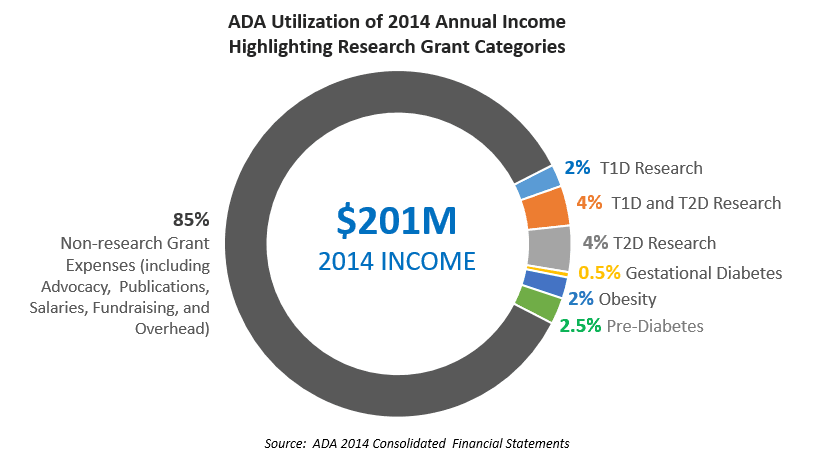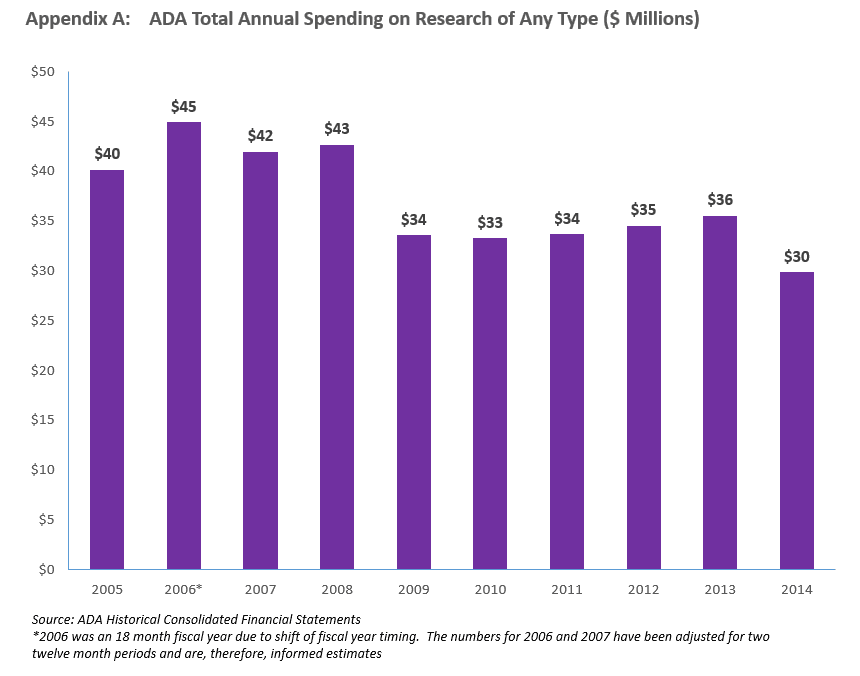
Summary Points:
- In contrast to the JDRF which has focused on Type 1 research funding, the ADA is primarily focused on Type 2 and research is only a minor part of their resource utilization.
- In 2014, the ADA generated $201 Million in income, of which $30 Million was spent on research of any type, the lowest total dollar amount allocated to research in the past ten years (Appendix A).
- 15% of the ADA's total annual income is utilized for funding research of any type, consistent with prior years (Appendix B).
- 85% of the ADA's annual income is spent on things other than research, such as publications, fundraising, education, and salaries.
- 2% is spent on research specifically for T1D, some of which is cure research.
- 4% is spent on research that addresses issues which the ADA claims are common to both T1D and T2D, such as some aspects of treatment and complications
- 9% is used for research specific to type 2 diabetes, including obesity and pre-diabetes.
- Despite the ADA focus on T2D, fundraising materials continue to rely heavily on images of children with diabetes, suggesting that the ADA is more committed to T1D than is in fact the case.
This is the third annual analysis of the ADA's funding for research. The main purpose in reviewing and sharing this data is to help ensure that the priorities of the T1D community are not lost in the ADA's heavy focus on type 2 diabetes. The ADA merits review because it annually raises hundreds of millions of dollars in donations that could be utilized to fund a T1D cure breakthrough. Our hope is that donors will encourage the ADA to shift strategic priorities and to substantially increase emphasis on T1D cure research.
In preparing the report, the JDCA team reviewed financial data for each of past ten years and reviewed all projects funded during 2014. Financial data is contained in publicly available Forms 990, and project abstracts can be reviewed through the research project database.


